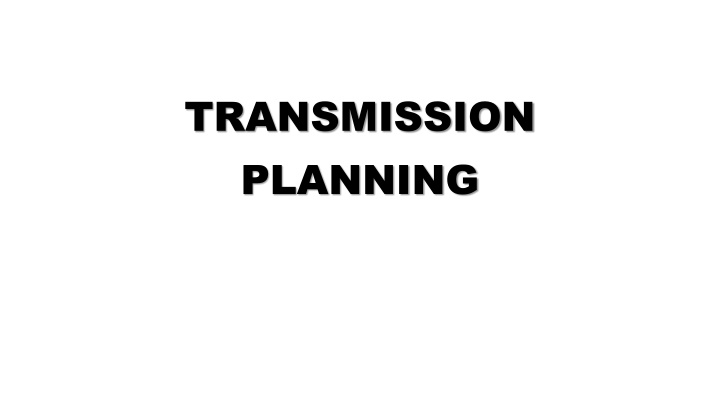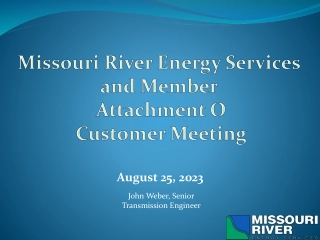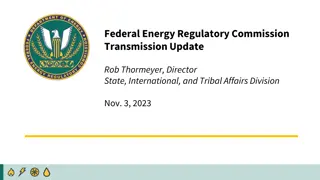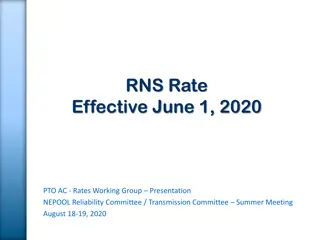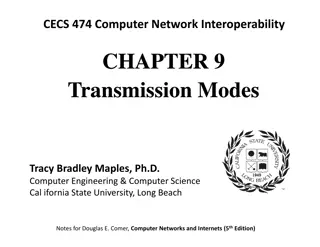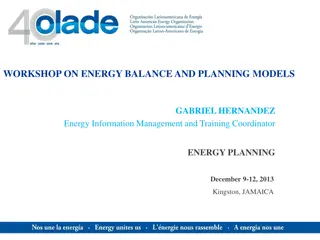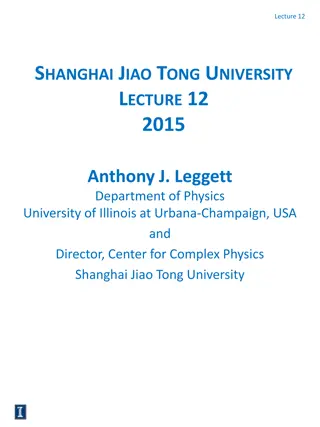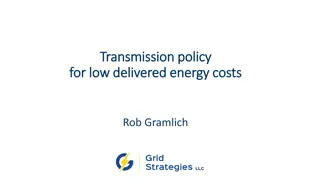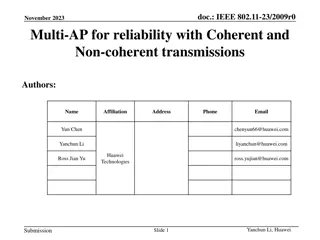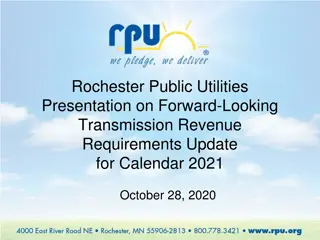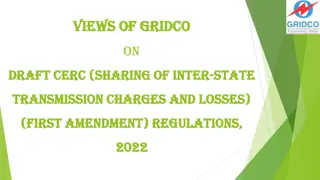TRANSMISSION PLANNING
The transmission system plays a crucial role in electricity supply by connecting power sources to consumption centers. In India, there are two main categories: Inter-State Transmission System (ISTS) and Intra-State Transmission System (Intra-STS). Planning for long-term capacity requirements and avoiding congestion is essential. Various guidelines govern the planning process, including collaboration between stakeholders and strategic corridor optimization.
Download Presentation

Please find below an Image/Link to download the presentation.
The content on the website is provided AS IS for your information and personal use only. It may not be sold, licensed, or shared on other websites without obtaining consent from the author.If you encounter any issues during the download, it is possible that the publisher has removed the file from their server.
You are allowed to download the files provided on this website for personal or commercial use, subject to the condition that they are used lawfully. All files are the property of their respective owners.
The content on the website is provided AS IS for your information and personal use only. It may not be sold, licensed, or shared on other websites without obtaining consent from the author.
E N D
Presentation Transcript
TRANSMISSION PLANNING
SOURCE: SOURCE: MANUAL ON TRANSMISSION PLANNING CRITERIA MANUAL ON TRANSMISSION PLANNING CRITERIA CENTRAL ELECTRICITY AUTHORITY CENTRAL ELECTRICITY AUTHORITY NEW DELHI NEW DELHI JANUARY 2013 JANUARY 2013
Planning philosophy and general guidelines Planning philosophy and general guidelines The transmission system forms a vital link in the electricity supply chain. Transmission system provides service of inter-connection between the source (generator) and consumption (load centers) of electricity. In the Indian context, the transmission system has been broadly categorised as Inter-State Transmission System(ISTS) and Intra-State Transmission system(Intra-STS). The ISTS is the top layer of national grid below which lies the Intra-STS.
Planning philosophy and general guidelines Planning philosophy and general guidelines The transmission system is generally augmented to cater to the long term requirements posed by eligible entities, for example, for increase in power demand, generation capacity addition etc. The long term applicants seeking transmission service are expected to pose their end-to-end requirements well in advance to the CTU/STUs so as to make-available the requisite transmission capacity, and minimise situations of congestion and stranded assets.
Planning philosophy and general guidelines Planning philosophy and general guidelines The transmission customers as well as utilities shall give their transmission requirement well in advance considering time required for implementation of the transmission assets. Planning of transmission system for evacuation of power from hydro projects shall be done river basin wise considering the identified generation projects and their power potential. In case of highly constrained areas like congested urban / semi-urban area,very difficult terrain etc., the transmission corridor may be planned by taking long term perspective of optimizing the right-of-way and cost.
Planning philosophy and general guidelines Planning philosophy and general guidelines As per Electricity Act, the STU shall act as the nodal agency for Intra-STS planning in coordination with distribution licensees and intra-state generators connected/to be connected in the STU grid. The STU shall be the single point contact for the purpose of ISTS planning and shall be responsible on behalf of all the intra-State entities, for evacuation of power from their State s generating stations, meeting requirements of DISCOMS and drawing power from ISTS commensurate with the ISTS plan.
Planning philosophy and general guidelines Planning philosophy and general guidelines Normally, the various intra-State entities shall be supplied power through the intra-state network. Only under exceptional circumstances, the load serving intra- State entity may be allowed direct inter-connection with ISTS on recommendation of STU provided that such an entity would continue as intra-State entity for the purpose of all jurisdictional matters including energy accounting. Under such situation, this direct interconnection may also be used by other intra-State entity(s).
Planning philosophy and general guidelines Planning philosophy and general guidelines Further, State Transmission Utilities (STUs) shall coordinate with urban planning agencies, Special Economic Zone (SEZ) developers, industrial developers etc. to keep adequate provision for transmission corridor and land for new substations for their long term requirements. The system parameters and loading of system elements shall remain within prescribed limits. The adequacy of the transmission system should be tested for different feasible load-generation scenarios.
Planning philosophy and general guidelines Planning philosophy and general guidelines The system shall be planned to operate within permissible limits both under normal as well as after more probable credible contingency(ies). However, the system may experience extreme contingencies which are rare, and the system may not be planned for such rare contingencies. To ensure security of the grid, the extreme/rare but credible contingencies should be identified from time to time and suitable defense mechanism, such as - load shedding, generation rescheduling, islanding, system protection schemes, etc. may be worked out to mitigate their adverse impact.
Planning philosophy and general guidelines Planning philosophy and general guidelines Critical loads such as - railways, metro rail, airports, refineries, underground mines, steel plants, smelter plants, etc. shall plan their interconnection with the grid, with 100% redundancy and as far as possible from two different sources of supply, in coordination with the concerned STU. The planned transmission capacity would be finite and there are bound to be congestions if large quantum of electricity is sought to be transmitted in direction not previously planned.
Planning philosophy and general guidelines Planning philosophy and general guidelines Appropriate communication system for the new sub-stations and generating stations may be planned by CTU/STUs and implemented by CTU/STUs/generation developers so that the same is ready at the time of commissioning.
Planning philosophy and general guidelines Planning philosophy and general guidelines The following options may be considered for strengthening of the transmission network. The choice shall be based on cost, reliability, right-ofway requirements, transmission losses, down time (in case of up- gradation and re-conductoring options) etc. 1. Addition of new transmission lines/ substations to avoid overloading of existing system including adoption of next higher voltage. 2. Application of Series Capacitors, FACTS devices and phase-shifting transformers in existing and new transmission systems to increase power transfer capability. 3. Up-gradation of the existing AC transmission lines to higher voltage using same right-of-way. 4. Re-conductoring of the existing AC transmission line with higher ampacity conductors.
Planning philosophy and general guidelines Planning philosophy and general guidelines 5. Use of multi-voltage level and multi-circuit transmission lines. 6. Use of narrow base towers and pole type towers in semi-urban / urban areas keeping in view cost and right-of-way optimization. 7. Use of HVDC transmission both conventional as well as voltage source convertor (VSC) based. 8. Use of GIS / Hybrid switchgear (for urban, coastal, polluted areas etc)
Criteria for steady Criteria for steady- -state and transient state and transient- -state behavior state behavior General Rules The transmission system shall be planned considering following general principles: 1. In normal operation ( N-0 ) of the grid, with all elements to be available in service in the time horizon of study, it is required that all the system parameters like voltages, loadings, frequency should remain within permissible normal limits.
Criteria for steady Criteria for steady- -state and transient state and transient- -state behavior state behavior General Rules 2. The grid may however be subjected to disturbances and it is required that after a more probable disturbance i.e. loss of an element ( N-1 or single contingency condition), all the system parameters like voltages, loadings, frequency shall be within permissible normal limits.
Criteria for steady Criteria for steady- -state and transient state and transient- -state behavior state behavior General Rules 3. However, after suffering one contingency, grid is still vulnerable to experience second contingency, though less probable ( N-1-1 ), wherein some of the equipments may be loaded up to their emergency limits. To bring the system parameters back within their normal limits, load shedding/re-scheduling of generation may have to be applied either manually or through automatic system protection schemes (SPS). Such measures shall generally be applied within one and a half hour after the disturbance.
Permissible normal and emergency limits Permissible normal and emergency limits Normal thermal ratings and normal voltage limits represent equipment limits that can be sustained on continuous basis. Emergency thermal ratings and emergency voltage limits represent equipment limits that can be tolerated for a relatively short time which may be one hour to two hour depending on design of the equipment.
Permissible normal and emergency limits Permissible normal and emergency limits The normal and emergency ratings to be used in this context are given below: 1. The loading limit for a transmission line shall be its thermal loading limit. The thermal loading limit of a line is determined by design parameters based on ambient temperature, maximum permissible conductor temperature, wind speed, solar radiation, absorption coefficient, emissivity coefficient etc. In India, ambient temperatures in various parts of the country are different and vary considerably during various seasons of the year.
Permissible normal and emergency limits Permissible normal and emergency limits Generally, the ambient temperature may be taken as 45 deg Celsius; however, in some areas like hilly areas where ambient temperatures are less, the same may be taken. 2. Design of transmission lines with various types of conductors should be based on conductor temperature limit, right-of-way optimization, losses in the line, cost and reliability considerations etc. 3. The emergency thermal limits for the purpose of planning shall be 110% of the normal thermal limits.
Permissible normal and emergency limits Permissible normal and emergency limits 4. The loading limit for an inter-connecting transformer (ICT) shall be its name plate rating. However, during planning, a margin as specified in clause 2 and clause 3 of planning margins shall be kept in the above lines/transformers loading limits.
Permissible normal and emergency limits Permissible normal and emergency limits Voltage Limits The steady-state voltage limits are given below.
Permissible normal and emergency limits Permissible normal and emergency limits Voltage Limits At the planning stage, a margin of about + 2% may be kept in the voltage limits. Thus the voltages under load flow studies (for N-0 and N-1 steady-state conditions only) may be maintained within the limits given below:
Permissible normal and emergency limits Permissible normal and emergency limits Temporary over voltage limits due to sudden load rejection: i) 800kV system 1.4 p.u. peak phase to neutral ( 653 kV = 1 p.u. ) ii) 420kV system 1.5 p.u. peak phase to neutral ( 343 kV = 1 p.u. ) iii) 245kV system 1.8 p.u. peak phase to neutral ( 200 kV = 1 p.u. ) iv) 145kV system 1.8 p.u. peak phase to neutral ( 118 kV = 1 p.u. ) v) 123kV system 1.8 p.u. peak phase to neutral ( 100 kV = 1 p.u. ) vi) 72.5kV system 1.9 p.u. peak phase to neutral ( 59 kV = 1 p.u. )
Permissible normal and emergency limits Permissible normal and emergency limits Switching over voltage limits i) 800kV system 1.9 p.u. peak phase to neutral ( 653 kV = 1 p.u. ) ii) 420kV system 2.5 p.u. peak phase to neutral ( 343 kV = 1 p.u. )
Reliability criteria Reliability criteria Criteria for system with no contingency ( N-0 ) a) The system shall be tested for all the load-generation scenarios as given in this document. (Load - generation scenarios, Load demands, Generation dispatches and modeling) b) For the planning purpose all the equipments shall remain within their normal thermal loadings and voltage ratings. c) The angular separation between adjacent buses shall not exceed 30 degree.
Reliability criteria Reliability criteria Criteria for single contingency ( N-1 ) 1. Steady-state a) All the equipments in the transmission system shall remain within their normal thermal and voltage ratings after a disturbance involving loss of any one of the following elements (called single contingency or N-1 condition), but without load shedding / rescheduling of generation:
Reliability criteria Reliability criteria - Outage of a 132kV or 110kV single circuit, - Outage of a 220kV or 230kV single circuit, - Outage of a 400kV single circuit, - Outage of a 400kV single circuit with fixed series capacitor(FSC), - Outage of an Inter-Connecting Transformer(ICT), - Outage of a 765kV single circuit - Outage of one pole of HVDC bipole.
Reliability criteria Reliability criteria b) The angular separation between adjacent buses under ( N-1 ) conditions shall not exceed 30 degree.
Reliability criteria Reliability criteria Criteria for single contingency ( N-1 ) 2. Transient-state : Usually, perturbation causes a transient that is oscillatory in nature, but if the system is stable the oscillations will be damped. The system is said to be stable in which synchronous machines, when perturbed, will either return to their original state if there is no change in exchange of power or will acquire new state asymptotically without losing synchronism. The transmission system shall be stable after it is subjected to one of the following disturbances:
Reliability criteria Reliability criteria Transient state a) The system shall be able to survive a permanent three phase to ground fault on a 765kV line close to the bus to be cleared in 100 ms. b) The system shall be able to survive a permanent single phase to ground fault on a 765kV line close to the bus. Accordingly, single pole opening (100 ms) of the faulted phase and unsuccessful re-closure (dead time 1 second) followed by 3-pole opening (100 ms) of the faulted line shall be considered.
Reliability criteria Reliability criteria Transient state c) The system shall be able to survive a permanent three phase to ground fault on a 400kV line close to the bus to be cleared in 100 ms. d) The system shall be able to survive a permanent single phase to ground fault on a 400kV line close to the bus. Accordingly, single pole opening (100 ms) of the faulted phase and unsuccessful re-closure (dead time 1 second) followed by 3-pole opening (100 ms) of the faulted line shall be considered.
Reliability criteria Reliability criteria Transient state e) In case of 220kV / 132 kV networks, the system shall be able to survive a permanent three phase fault on one circuit, close to a bus, with a fault clearing time of 160 ms (8 cycles) assuming 3-pole opening. f) The system shall be able to survive a fault in HVDC convertor station, resulting in permanent outage of one of the poles of HVDC Bipole.
Reliability criteria Reliability criteria Transient state g) Contingency of loss of generation: The system shall remain stable under the contingency of outage of single largest generating unit or a critical generating unit (choice of candidate critical generating unit is left to the transmission planner).
Reliability criteria Reliability criteria Criteria for second contingency ( N-1-1 ) Under the scenario where a contingency as defined earlier has already happened, the system may be subjected to one of the following subsequent contingencies (called N-1-1 condition): a) The system shall be able to survive a temporary single phase to ground fault on a 765kV line close to the bus. Accordingly, single pole opening (100 ms) of the faulted phase and successful re-closure (dead time 1 second) shall be considered.
Reliability criteria Reliability criteria Criteria for second contingency ( N-1-1 ) b) The system shall be able to survive a permanent single phase to ground fault on a 400kV line close to the bus. Accordingly, single pole opening (100 ms) of the faulted phase and unsuccessful re-closure (dead time 1 second) followed by 3-pole opening (100 ms) of the faulted line shall be considered. c) In case of 220kV / 132kV networks, the system shall be able to survive a permanent three phase fault on one circuit, close to a bus, with a fault clearing time of 160 ms (8 cycles) assuming 3-pole opening.
Reliability criteria Reliability criteria Criteria for second contingency ( N-1-1 ) (d) In the N-1-1 contingency condition as stated above, if there is a temporary fault, the system shall not loose the second element after clearing of fault but shall successfully survive the disturbance. (e) In case of permanent fault, the system shall loose the second element as a result of fault clearing and thereafter, shall asymptotically reach to a new steady state without losing synchronism. In this new state the system parameters (i.e. voltages and line loadings) shall not exceed emergency limits, however, there may be requirement of load shedding / rescheduling of generation so as to bring system parameters within normal limits.
Reliability criteria Reliability criteria Criteria for generation radially connected with the grid For the transmission system connecting generators or a group of generators radially with the grid, the following criteria shall apply: a) The radial system shall meet N-1 reliability criteria as given earlier b) For subsequent contingency i.e. N-1-1 , only temporary fault shall be considered for the radial system.
Reliability criteria Reliability criteria Criteria for generation radially connected with the grid c) If the N-1-1 contingency is of permanent nature or any disturbance/contingency causes disconnection of such generator/group of generators from the main grid, the remaining main grid shall asymptotically reach to a new steady-state without losing synchronism after loss of generation. In this new state the system parameters shall not exceed emergency limits, however, there may be requirement of load shedding / rescheduling of generation so as to bring system parameters within normal imits.
Criteria for simulation and studies Criteria for simulation and studies System studies for transmission planning The system shall be planned based on one or more of the following power system studies, as per requirements: i) Power Flow Studies ii) Short Circuit Studies iii) Stability Studies (including transient stability ** and voltage stability) iv) EMTP studies (for switching / dynamic over-voltages, insulation coordination, etc)
Criteria for simulation and studies Criteria for simulation and studies Consideration of voltage level For the purpose of planning of the ISTS (Inter State Trsnsmission System): a) The transmission network may be modeled down to 220kV level with exception for North Eastern Region and parts of Uttrakhand, Himachal and Sikkim which may be modeled down to 132kV level. b) Load may be lumped at 220kV or 132kV/110kV, as the case may be.
Criteria for simulation and studies Criteria for simulation and studies Consideration of voltage level c) The generating units that are stepped-up at 132kV or 110kV may be connected at the nearest 220kV bus through a 220/132 kV transformer for simulation purpose. The generating units smaller than 50 MW size within a plant may be lumped and modeled as a single unit, if total lumped installed capacity is less than 200 MW.
Criteria for simulation and studies Criteria for simulation and studies Consideration of voltage level For the purpose of planning of the Intra-STS System, the transmission network may be modeled down to 66kV level or up to the voltage level which is not in the jurisdiction of DISCOM. The STUs may also consider modeling smaller generating units, if required.
Criteria for simulation and studies Criteria for simulation and studies Time Horizons for transmission planning Concept to commissioning for transmission elements generally takes three to five years; about three years for augmentation of capacitors, reactors, transformers etc., and about four to five years for new transmission lines or substations. Therefore, system studies for firming up the transmission plans may be carried out with 3-5 year time horizon.
Criteria for simulation and studies Criteria for simulation and studies Load demands Active power (MW) a) The system peak demands (state-wise, regional and national) shall be based on the latest Electric Power Survey (EPS) report of CEA. b) The load demands at other periods (seasonal variations and minimum loads) shall be derived based on the annual peak demand and past pattern of load variations.
Criteria for simulation and studies Criteria for simulation and studies Load demands Active power (MW) a) The system peak demands (state-wise, regional and national) shall be based on the latest Electric Power Survey (EPS) report of CEA. b) The load demands at other periods (seasonal variations and minimum loads) shall be derived based on the annual peak demand and past pattern of load variations.
Criteria for simulation and studies Criteria for simulation and studies Load demands Active power (MW) c) While doing the simulation, if the peak load figures are more than the peaking availability of generation, the loads may be suitably adjusted substation- wise to match with the availability. Similarly, while doing the imulation, if the peaking availability is more than the peak load, the generation dispatches may be suitably reduced, to the extent possible, such that, the inter-regional power transfers are high.
Criteria for simulation and studies Criteria for simulation and studies Load demands Active power (MW) d) From practical considerations the load variations over the year shall be considered as under: i. Annual Peak Load ii. Seasonal variation in Peak Loads for Winter, Summer and Monsoon iii. Seasonal Light Load (for Light Load scenario, motor load of pumped storage plants shall be considered)
Criteria for simulation and studies Criteria for simulation and studies Load demands Active power (MW) e) The sub-station wise annual load data, both MW and MVAr shall be provided by the State Transmission Utilities as per the format.
